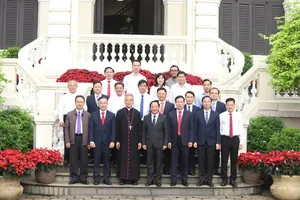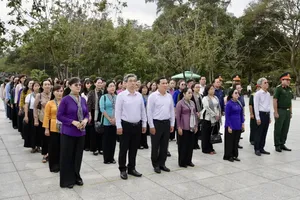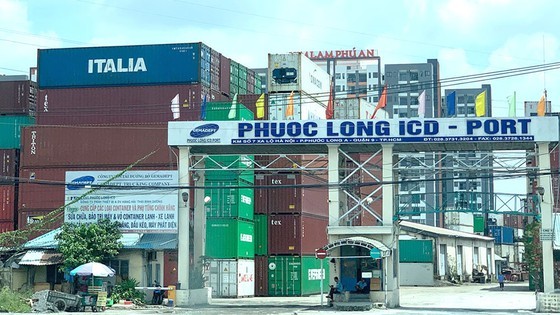
According to the HCMC People's Committee, seaports construction investment should focus on making the most of the natural resources, investing in modern construction, saving resources, reducing pollution, improving efficiency, connecting supply chains of port logistics services, meeting the requirements of socio-economic development and international economic integration, and ensuring national defense and security as well as sustainable development.
Regarding the direction of seaport development for the Saigon River area, the city said it will continue to move and convert the functions of these ports according to Decision 791/2005 of the Prime Minister.
Specifically, regarding Cat Lai port on Dong Nai river, HCMC’s current main seaport area, the city will continue to fully develop wharves and warehouses according to planning, modernize loading and unloading equipment, and apply information technology in freight forwarding.
The city also concurs to develop an additional 600m of wharf in the land adjacent to Tan Cang Phu Huu port (Ben Nghe seaport) downstream to District 9 to ensure continuity with the existing wharf system in accordance with the city’s plan of using this area for port services and warehouses.
For the SP-ITC international container terminal, the city proposed not to build an additional 200m of berth to ensure safe navigation for vehicles traveling from Ong Nhieu canal to Dong Nai river and vice versa.
In addition, the city also proposed the expansion of Cat Lai seaport on Dong Nai river upstream to accommodate freight ships of up to 30,000 DWT.
Regarding seaports on Nha Be river, the current planning will basically be kept as is, which includes the completing constructions, upgrading the wharf, modernizing cargo handling equipment to improve efficiency and meet the demand for future goods import and export.
According to the approved plan for the Hiep Phuoc seaport area on Soai Rap river, which would become the main seaport area of Ho Chi Minh City in the future, new ports is going to be built downstream, accommodating ships of up to 30,000 DWT full-load and 50,000 DWT offloading.
In the report on the master plan to develop Vietnam's seaport system for 2021-2030 with vision to 2050 from the consulting unit, Marine Construction Consulting JSC, there are plans to make additional arrangement for container ports and bulk cargoes at 4 locations in Can Gio district.
The city believes that location No. 01 adjacent to Long Tau river in Binh Khanh commune, Can Gio district has advantageous traffic connection with the future Ben Luc - Long Thanh expressway, so it is possible to consider seaport planning, but it is necessary to look further into the area behind the port for logistics service.
The consultant’s plans for location No. 02 was dismissed.
For location No. 03 adjacent to Saigon - Vung Tau channel in Long Hoa commune, Can Gio district, the consultant proposed a 150ha with a shoreline about 3,000m long, accommodating ships of up to 150,000 DWT, located in the buffer zone of Can Gio Biosphere Reserve.
The City authorities believe that this location can connect traffic to Rung Sac route at the seaport of Saigon - Vung Tau channel which has to accommodate cargo ships up to 150,000 DWT, international passenger ships up to 200,000 GT.
For location No. 04 contiguous to Cai Mep - Thi Vai channel of Ong Cho islet, Can Gio district, there are plans for a dedicated seaport with a scale of 100ha, a shoreline length of about 2,500m, accommodating vessels up to 200,000 DWT. The plan was approved by city authorities.
Aside fromt that, the People's Committee of Ho Chi Minh City also proposed the planning of a deep-water seaport on the right bank of Thi Vai river, Go Gia islet area, Can Gio district, to accommodat ships up to 80,000 DWT after 2030.
The city also proposes to review and evaluate the connecting network of transport infrastructure, logistics centers, and inland container depot in the region to propose transportation via roads, inland waterways and railways connected to HCMC seaports.
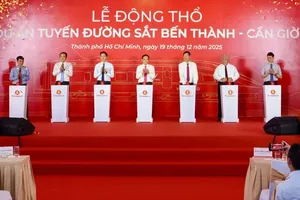



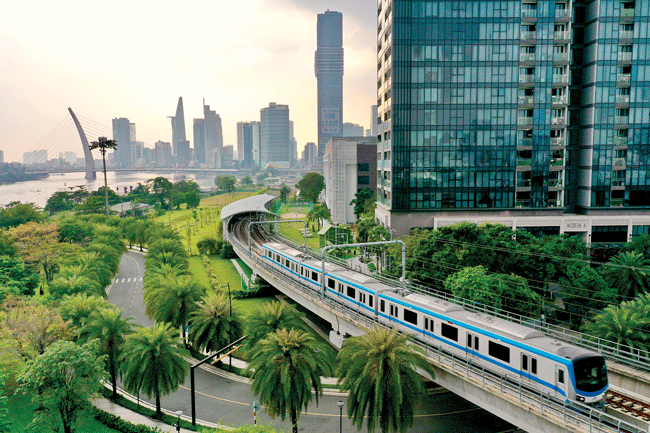



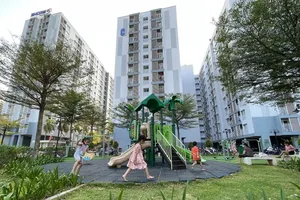

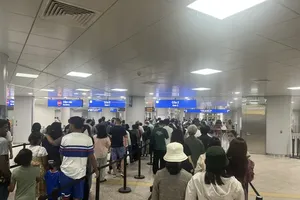
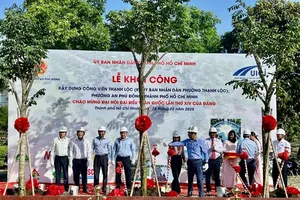

)

